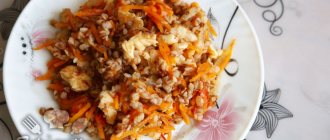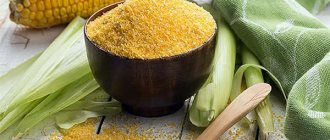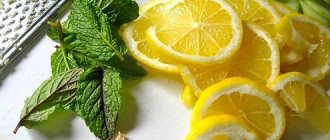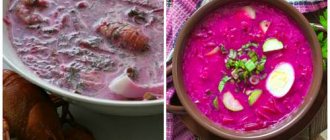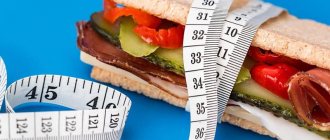Eating within 2,500 calories per day is suitable for people with increased physical activity, which requires the right balance between food intake and nutrients.
There are quite a few advantages of dietary nutrition: budget-friendly, normalization of the gastrointestinal tract, obtaining microelements and vitamins, ease of administration. A diet of 2500 calories per day is not only nutrition for athletes or those who want to gain muscle mass, but also for people with diabetes (including the addition of drugs that lower sugar levels).
Nutrients required for the diet:
- cholesterol (no more than 300 mg);
- fats (no more than 25 g);
- dietary fiber (no more than 25 g);
- carbohydrates (257-586 g);
- proteins (58-117 g).
List of foods for 2500 calories per day:
- fresh and stewed vegetables;
- fruits;
- spices and herbs;
- vegetable fats and oils;
- soups;
- sauces without added preservatives;
- meat gravies;
- nuts;
- legumes;
- pasta;
- fresh juices;
- eggs;
- dairy and fermented milk products;
- bakery products made from whole grain flour;
- honey.
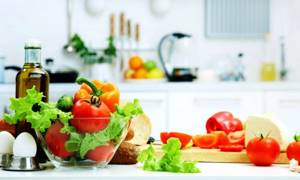
Introduction
Healthy eating is important not only and not so much for maintaining a beautiful and slim figure. Healthy food helps to avoid a number of diseases that have become a real scourge of modern society. Diabetes, cardiovascular pathologies, diseases of the gastrointestinal tract and nervous system, premature aging - all such disorders often arise due to non-compliance with healthy nutrition standards. The rhythm of life and fashion throw us from one extreme to another - from quick snacks on unhealthy hamburgers and chips to exhaustion due to popular diets that are not always effective.
How often do we prefer easily accessible fast food to healthy products! Meanwhile, nutritionists call the calories that the body receives after eating such food “empty.” Dishes belonging to the category of so-called fast food do not contain the amount of nutrients (vitamins, minerals, fiber, pectins and flavonoids) necessary to maintain normal human life. On the contrary, fast food contains hydrogenated fats, flavor enhancers and preservatives, which contribute to the exacerbation of existing diseases and the development of new ones. Addiction to newfangled diets, usually focused on a narrow range of products, also has a detrimental effect on health. A deficiency, and even more so the absence of any vitamin in the body inevitably leads to metabolic disorders. A diet that does not include a sufficient amount of vitamins causes a decrease in the body’s performance and resistance to diseases, deterioration in well-being and loss of external attractiveness. For example, rough skin and the appearance of premature wrinkles, fragility and hair loss can be symptoms of vitamin A deficiency, dark circles under the eyes - a lack of vitamin K, flaking and brittle nails - vitamin E hypovitaminosis.
Healthy food, even if consumed in fairly large portions, is always low in calories. The diet must contain vegetables, fruits and berries as the main components of a nutritious diet. Of course, plant products are best consumed raw, but if they are properly prepared in dishes that require heat treatment, the nutritional value decreases slightly.
Lean meat, fish and poultry should also be included in the daily menu: these products are important sources of proteins and fats.
Do not think that low-calorie food is difficult to get used to, since it is tasteless and unappetizing. The taste of vegetable soups, steamed meat, salads dressed with vegetable oil, and other low-calorie dishes becomes much brighter if they are prepared with the addition of various spices, seasonings and aromatic fresh herbs.
A balanced diet includes, at a minimum, breakfast, lunch and dinner. Skipping any of these meals is more likely to contribute to weight gain than weight loss. For example, if you skip breakfast, you will probably get hungry during the day and won’t be able to resist a hearty lunch. Therefore, you need to eat little and often. The most beneficial is considered to be five low-calorie meals a day. For snacks between main meals, instead of such unhealthy chips, buns and similar products, preference should be given to fruits, light toasts and sandwiches, and yoghurt.
In this book you will find recipes that are not only healthy, but also very tasty low-calorie dishes for breakfast, lunch, dinner and snacks in between, which will please even the most discerning gourmets. A description of the preparation of each dish is accompanied by an indication of the number of servings and kilocalories, which will help you create the most suitable menu for you.
Diet 200 kcal per day
Any weight loss system involves reducing daily caloric intake. Some involve avoiding certain foods while including permitted ones. It is not necessary to calculate the energy value of everything eaten, since there is a special diet for 1200 kcal. It is ideal for people leading a sedentary lifestyle. The system does not give quick results, but it allows you to consistently lose weight and gain harmony. The number of calories was not chosen randomly. It is optimal for obtaining all the necessary substances and creating a deficit that guarantees weight loss when fat deposits begin to be broken down for energy.
Hercules with apple and raisins
3 servings 188 kcal
Ingredients: 100 g rolled oats, 1 green apple, 50 g light seedless raisins, 1 tablespoon honey.
Cooking method
Pour oatmeal into a saucepan, add 150 ml of hot water, cook under the lid until completely swollen. Rinse the raisins, pour boiling water over them, let sit for 7 minutes, then drain the water.
Wash the apple, remove the core and seeds, grate the pulp on a coarse grater. Mix the finished porridge with apple, raisins and honey, arrange on plates and serve.
Oatmeal porridge with dried apricots
2 servings 195 kcal
Ingredients: 8 tablespoons of instant oatmeal, 75 ml of low-fat kefir, 1 tablespoon of honey, 50 g of steamed dried apricots.
Cooking method
Place the flakes in an enamel or ceramic bowl, pour in 100 ml of boiling water, cover with a lid and leave for 5 minutes. Stir the porridge, add chopped dried apricots, honey and kefir and mix again. Divide the porridge into bowls and serve.
Unusual filled breads, 186 kcal

Photo: thinkstockphotos.com 4 loaves of bread, 70 g low-fat cottage cheese, 25 g pitted olives, 5 g each pumpkin seeds, pine nuts and sesame seeds, basil or dill, garlic - optional, salt - to taste In a blender, grind the cottage cheese with olives, herbs and garlic, if you add. Add salt and mix. Spread on bread, sprinkle with mixture of seeds and nuts.
Hercules with pineapple
3 servings 185 kcal
Ingredients: 10 tablespoons of rolled oats, 100 g of pineapple pulp, 100 ml of low-fat drinking yogurt, 1 tablespoon of liquid honey, vanilla on the tip of a knife.
Cooking method
Fill Hercules with 150 ml of warm water overnight, drain off excess water in the morning. Cut the pineapple pulp into small cubes, add to the porridge along with yogurt, vanilla and honey, mix thoroughly. The dish can be reheated in the microwave before serving.
Muesli with fruit
4 servings 175 kcal
Ingredients: 200 g muesli, 1 kiwi, 1 banana,
1 apple, 0.5 teaspoon grated lemon zest,
2 tablespoons of liquid honey.
Cooking method
Pour the muesli into a ceramic bowl, pour 100 ml of boiling water, cover with a lid, and let it swell. Rinse the kiwi with water, peel and cut into small cubes. Wash the apple, remove the core and seeds, cut into small cubes. Peel the banana, cut into thin slices. Combine ready-made muesli with pre-prepared fruits, add lemon zest and honey and mix thoroughly.
Menu for 4 days
- Day 1, 200 calories. During the first day you can eat 1 pear, 200 g of carrots, 2/3 cup of kefir, 2/3 of an apple. Drink as much water as possible between meals, eat small meals.
- Day 2, 400 calories. Low-fat cottage cheese 100 g, 200 g cabbage, 100 g rye bread, half a glass of kefir, 1 banana. Don't forget to drink plenty of fluids.
- Day 3, 600 calories. Tofu 100 g, hard-boiled egg, 150 g boiled chicken breast, a glass of kefir, half a banana. We remember the need for clean drinking water in our diet.
- Day 4, 800 calories. 200 g steamed cod, 100 g fresh white cabbage, one hard-boiled egg, tea with honey and lemon, 1 chocolate candy.
It is worth considering that in the first days the weight comes off much better than in the final stage. Many people notice that after finishing the diet, the weight comes on with a vengeance. This will not happen if you exit the diet correctly. Nutritionists recommend that from the thirteenth day, each subsequent day you add 200 calories to your diet until you reach the numbers that are optimal for your body.

Oatmeal-buckwheat porridge with bran
6 servings 180 kcal
Ingredients: 100 g oatmeal, 50 g buckwheat flour, 50 g bran, 800 ml low-fat milk, 2 tablespoons liquid honey.
Cooking method
Heat the bran with constant stirring in a dry frying pan, transfer to a saucepan, add oatmeal and buckwheat flour. Pour milk into the pan, bring to a boil and simmer over low heat for 10 minutes. Add honey to the finished porridge and stir. Divide the porridge into bowls and serve.
Instant buckwheat porridge
6 servings 157 kcal
Ingredients: 200 g buckwheat, 50 ml vegetable oil, salt.
Cooking method
Wash the buckwheat, put it in a saucepan and pour 400 ml of boiling water.
Bring to a boil over high heat, add salt, reduce heat to low, open the lid and cook for 15 minutes. Season the finished porridge with vegetable oil.
This porridge can be served with fresh or canned berries, fruits, vegetables, fish or lean meat.
Five delicious breakfasts under 200 calories
1. Berry French Toast
We use:
- 1-1.5 cups frozen berries;
- 3 tbsp. l. Sahara;
- 8 pieces of baguette;
- 4 eggs;
- 1 tsp. grated orange zest;
- 100 ml orange juice;
- salt to taste;
- any favorite syrup;
- 100 g ground nuts.
How to prepare:
- Preheat the oven to 180 degrees.
- Mix berries with 2 tbsp. l. sugar and fill the “pockets” cut out in each slice of bread.
- Whisk the eggs, orange zest, orange juice, salt and remaining sugar, and dip the stuffed bread into the mixture.
- Bake it for 14-17 minutes until golden brown.
- Drizzle with syrup and sprinkle with nuts.
Note: You can use your favorite fruit instead of berries or add cream cheese to the filling.
2. Italian frittata
We use:
- 4 eggs;
- 6 proteins;
- 1/2 tbsp. grated cheese;
- 1/2 tsp. finely chopped sage;
- 1/2 teaspoon salt;
- 1/4 teaspoon black pepper;
- 1 tsp. vegetable oil;
- 1 small zucchini;
- green onions (can be dried);
- 2 tomatoes.
How to prepare:
- Beat eggs and whites. Add 1/4 cup cheese, sage, salt and pepper, stirring constantly.
- Place zucchini and green onions in a heated frying pan with oil. After two minutes, pour the egg mixture over the vegetables, cover the pan with a lid and simmer over low heat for 4-7 minutes.
- Add tomatoes and remaining cheese. When the cheese has melted, you can serve. Breakfast for four is ready.
Note: zucchini can be replaced with zucchini, peeling it, and sage with rosemary.
3. Pancakes with cottage cheese
We use:
- 1-1.5 tbsp. skim milk;
- 3 eggs;
- 2 tbsp. l. ghee;
- 2/3 tbsp. flour;
- 1 glass of cottage cheese;
- 60 g cream cheese;
- 2 tbsp. l. Sahara;
- 2 tbsp. berries;
- 1/2 cup ground nuts;
How to prepare:
- In a bowl, whisk together milk, eggs and butter. Add flour and salt. Stir until smooth and refrigerate for 1 hour (you can make the dough, for example, the night before).
- Pour 2 tbsp into a heated and oiled frying pan. l. batter, allowing the pancakes to spread.
- Fry until golden brown on each side.
- Mix cheese, cottage cheese and nuts in a blender. Spread the mixture onto the pancakes and wrap.
- Bake in the oven for 10-15 minutes at 180 degrees.
- Serve with berries and powdered sugar.
Note: nuts can be replaced with berries or fruits.
4. Berry yogurt
We use:
- 800 g low-fat yogurt;
- 1 glass of berries;
- 100 g berry juice with pulp;
- 3 tbsp. l. confectionery sugar;
- 1 tsp. vanillin;
How to prepare:
- Pour the yogurt into a container with a paper filter to let it sit for eight hours. This is necessary to make it less watery.
- Then mix the “dehydrated” yogurt with berries, sugar, juice and vanilla.
- Cool the resulting mixture for 15-20 minutes. Serve cold.
Note: Confectioners' sugar can be replaced with powdered sugar.
5. Scrambled eggs with tomatoes
We use:
- 1/2 sweet onion;
- 1 tomato;
- basil or other Italian seasoning;
- salt and pepper to taste;
- 1 egg;
- 1 tbsp. spoon of water;
- 2 tbsp. spoons of grated cheese;
How to prepare:
- Fry the onion in a frying pan with a small amount of vegetable oil.
- Add tomatoes, basil, salt and pepper and cook for 1 more minute.
- Beat the egg with water and pour over the vegetables in the pan. When the egg is cooked, remove from heat, sprinkle with cheese and cover with a lid.
- Once the cheese has melted, you can serve.
